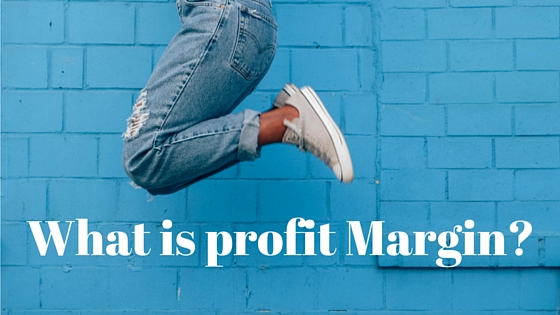Profit margin is one of the most important measures you need to understand for your business. Very simply, it is a measure of your business’s profitability.
It is calculated by dividing the difference between sales and costs and dividing it by the sales, then multiplying the answer by 100 to turn it into a percentage.
Put another way, profit margin is the percentage of sales revenue that is turned into profit.
Profit margin differs from the one of the other profitability related terms such as “mark-up” (also known as profit percentage or profit on cost), as it is calculated on sales, where as mark-up is calculated on cost.
Uses of Profit Margin
Profit margins are mainly used as as an internal comparison to measure the performance of a business. (Whether that’s your own business or examining the performance of a business you want to invest in or acquire.)
As a business owner, you can use profit margins to compare profitability of a product or service over time (i.e. are costs increasing or are sales decreasing?) or they can be used to compare against other products or services.
How to Calculate Your Profit Margin
Profit Margin is calculated by deducting the total costs of a product or service from the sales revenue of the product or service and dividing it by the sales revenue, multiplying by 100.
Example:
Sales: $100
Costs: $60
Profit: $40 (Sales- costs)
Profit Margin is:
Profit x 100
Sales
How to Calculate Mark-up
Mark-up is calculated differently to profit margin. For example profit is divided by costs:
Profit x 100
Costs
Mark-up is simply the amount added to the cost price of goods or services to cover overheads and profit. There’s a good explanation here of ways to calculate sales prices at a theoretical level, but calculating the markup needs to take into account many things and not just a simple adding a 30% mark up to the costs of the goods or services you provide.
For example, what price are your competitors charging, how much demand will there be for your product at that price? Generally speaking, the lower the price, the more you sell. Similarly the higher the price, the less you sell.
So getting the price right is as much an art at is a science and there’s as much psychology involved as there is maths. For example the price of a Louis Vuitton handbag is as much about the experience of buying the handbag as it is about the handbag itself. So you need to think about all of those things. After all, no one would want to buy a Louis Vuitton off a market stall at the same price you’d be paying in one of their stores (assuming it was a genuine item!).
What is the difference between Profit Margin and Mark Up?
Profit margin and mark-up are accounting terms for two different sides of a transaction. Basically profit margin is sales price minus the cost price of the product you are selling. Whereas mark up is the amount a product or service cost price is increased by in order to arrive at the sales price. `
***
If you enjoyed this post, please share using the links below and to get weekly free advice and insider tips on growing your business, working less and earning more, sent direct to your inbox, then please join my free weekly newsletter.


